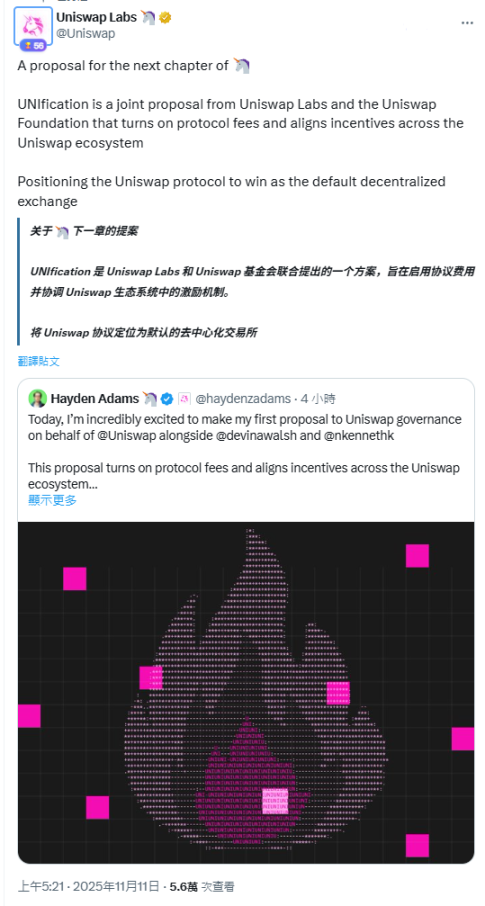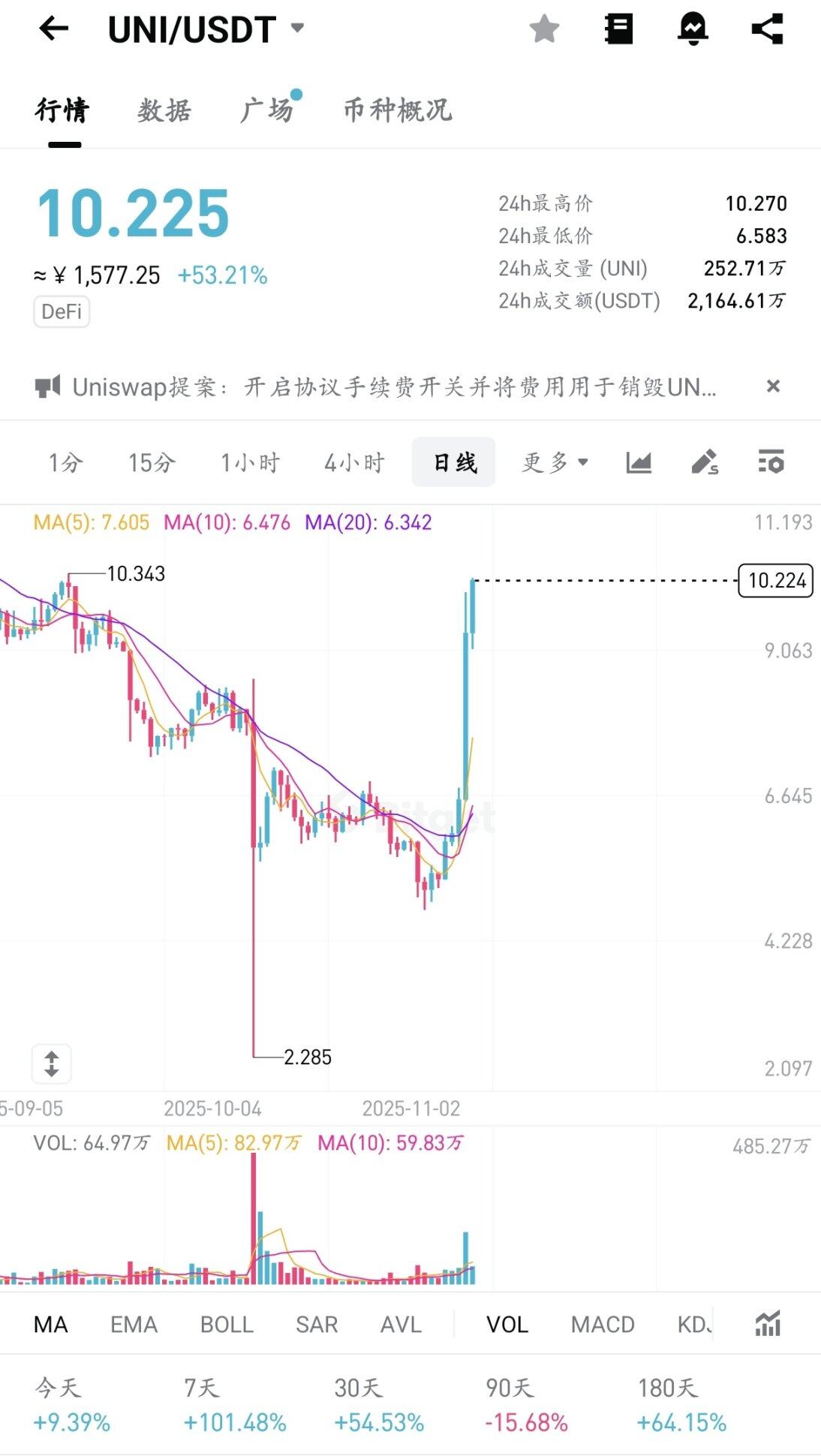Original author: Sanqing, Foresight News
On November 11, decentralized exchange Uniswap Labs and the Uniswap Foundation jointly released the "UNInitiation Proposal," which plans to implement a protocol fee mechanism, token burning, and integrate the core team's governance structure. Following the announcement, the UNI token surged by over 50%, breaking through $10 and reaching a market capitalization of over $6 billion.
Core of the proposal: Protocol revenue, token burning, and unified governance.
According to official documents, UNInformation aims to achieve ecosystem incentive consistency by "driving UNI value through protocol usage," with specific measures including:
Activate the agreement fee mechanism
Uniswap will officially launch protocol-level fee distribution, with a portion of transaction fees being directed to UNI burning pools to reduce the circulating supply of tokens. This will be implemented first in v2 and v3 pools, and then extended to L2 and future versions.
Benefits of integrating Unichain
Since its launch nine months ago, Unichain has generated approximately $7.5 million in annualized transaction fees, all of which will flow into the same burning mechanism in the future.
100 million UNI tokens were retroactively destroyed.
One hundred million tokens from the treasury (approximately 16% of the circulating supply) will be burned directly to simulate the amount that would be burned if the fee mechanism were enabled starting in 2020.
Introducing the PFDA (Protocol Fee Discount Auctions) system
Users can obtain "no-deal-fee trading" privileges through auctions, with the proceeds going into the burning pool. This mechanism will also help the protocol internalize MEV revenue and improve LP yields.
Aggregator Hooks and Protocol Extensions
Uniswap v4 will be upgraded to an on-chain aggregator, collecting fees from external liquidity sources and executing token burning logic, further expanding the scope of protocol revenue.
Governance Structure Integration
Uniswap Labs will absorb the Foundation's ecosystem team to form a unified growth strategy. The board of directors will expand to five members, including Hayden Adams, Devin Walsh, Ken Ng, Callil Capuozzo, and Hart Lambur.
Annual growth budget
Starting in 2026, governance will allocate 20 million UNI annually for developer funding, protocol growth, and ecosystem incentives.
Official statement: Uniswap enters the "next era"
Uniswap founder Hayden Adams stated, "We've gone through a tough regulatory cycle and paid a heavy price over the past few years, but the environment is starting to improve. UNIfication marks a new phase for Uniswap, realigning the token, protocol, and community."
In a statement, the Foundation said, "We believe this move will make Uniswap the default decentralized trading platform for tokenized value globally."

Market reaction: UNI regains attention
As of writing, stimulated by the proposal, UNI has surged over 50% in 24 hours, breaking through $10 and reaching a market capitalization of over $6 billion, returning to the top 30 crypto assets. The combination of the protocol fee mechanism and the burning mechanism introduces a clear cash flow and scarcity logic to UNI.

Uniswap has accumulated over $4 trillion in trading volume, consistently ranking as the world's largest decentralized exchange. This governance reform will solidify its dominant position in the ecosystem and set a new standard for the "value capture model" in the entire DeFi market.
Conclusion
Since its inception in 2018, Uniswap has been a core driver of DeFi structural innovation. This "UNInvention" proposal not only signifies the unification of its business and governance models, but also marks the beginning of DeFi protocols moving from "public infrastructure" to "sustainable economies."
- 核心观点:Uniswap治理提案推动代币价值重估。
- 关键要素:
- 启动协议费用与代币燃烧机制。
- 直接销毁1亿枚UNI代币。
- 整合治理结构与增长预算。
- 市场影响:UNI价格暴涨,重塑DeFi价值模型。
- 时效性标注:中期影响



